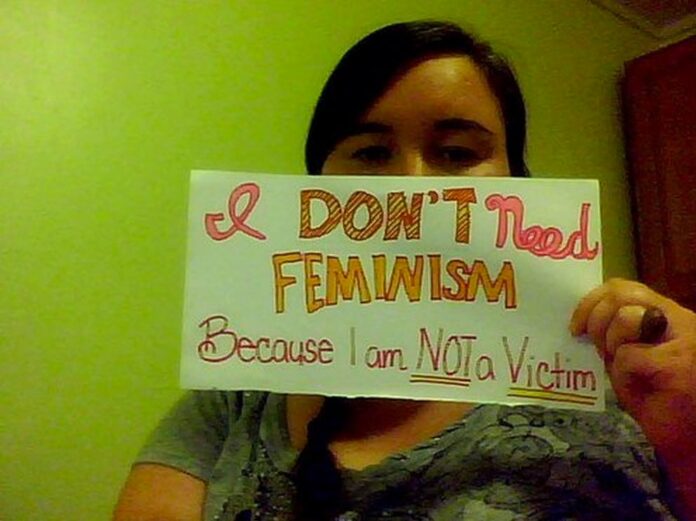In contemporary discourses surrounding gender studies, one recurrent and contentious theme is the relationship between feminism and femininity. The inquiry into whether feminism undermines femininity permeates discussions among scholars, activists, and women’s rights proponents. This intricate labyrinth of thought underscores the complexities inherent in gender identity and the societal constructs that shape them. By examining this interplay from various perspectives, a more nuanced understanding emerges, allowing for a more profound investigation into the intricate narratives that accompany both feminism and femininity.
The archetype of femininity has long been tethered to conventional conventions—softness, nurturing behavior, and aesthetic appeal have historically defined what it means to be feminine. Feminism, conversely, advocates for equality, empowerment, and the reclamation of agency in society. These paradigms may appear, at first glance, oppositional. However, beneath the surface lies a converging dialogue that questions the rigidity of traditional definitions of femininity and explores how feminism invites a reimagining of what femininity can signify in a modern context.
The exploration of this controversial question compels us to dissect both the perceived antagonism between these constructs and the potential for a reconciliatory space in which they coexist, redefined in light of evolving social realities.
Reevaluating the Constructs of Femininity
Traditionally, femininity has been encased within a narrow framework dictated by patriarchal societies. The designation of traits like empathy, gentleness, and domesticity have been classified as quintessentially feminine. Such frameworks not only constrain women’s identities but also alienate those who do not conform to these rigid expectations. Feminism seeks to dismantle these archetypes by advocating for a broader interpretation of womanhood that includes, but is not limited to, the stereotypical traits often associated with femininity.
This redefinition is pivotal; it permits women to transcend limitations and embrace a diverse spectrum of identities. Feminism does not mandate that women relinquish their femininity; rather, it champions the notion that femininity can be reconstituted to incorporate strength, leadership, and independence. This element is crucial as it enables women to embody traits previously regarded as masculine without losing their sense of self or adherence to their femininity.
The narratives arising from feminist theory posit that femininity can and should be multifaceted. The emergence of women’s voices in various spaces—political, academic, and personal—serves to highlight this evolution. Prominent feminist theorists, such as Judith Butler and bell hooks, have argued that gender is socially constructed rather than biologically predetermined, emphasizing the fluidity of femininity and the complexities of female identity.
Feminism as an Agency-Enhancing Movement
Another pertinent consideration in the discourse about feminism’s impact on femininity pertains to the notion of agency. Agency, which refers to the capacity of individuals to act independently, plays a critical role in the feminist movement. Feminism empowers women to assert their individuality, pursue divergent paths, and dismantle imposed limitations. Feminists advocate for reproductive rights, workplace equality, and freedom from gender-based violence, confronting societal norms that can curtail women’s autonomy.
By asserting their agency, women begin to undermine the very societal scripts designed to confine them. The resultant liberation assists in redefining femininity on their own terms. When women are granted the right to choose—whether in terms of career, family, or personal identity—they reshape the narrative surrounding what it means to be feminine. The capabilities to choose one’s path engender a reimagined femininity that discards subservience or passivity in favor of self-determination and empowerment.
Furthermore, it is essential to scrutinize the ways in which embracing feminism coincides with a rejection of certain traditional feminine roles that, while not inherently negative, may perpetuate dependency and inequality. Such a rejection does not equate to the destruction of femininity; instead, it fosters a new landscape where femininity adapts and evolves, integrating contemporary values and aspirations. This evolution does not necessitate a departure from characteristics historically attributed to femininity; rather, it broadens the spectrum of femininity to encompass a richer, more comprehensive portrayal of women’s lives.
Intersecting Feminism and Cultural Narratives
The discourse surrounding feminism and femininity is deeply entwined with cultural narratives. For instance, various cultures around the world articulate different interpretations and practices of femininity, often informed by societal values, norms, and historical contexts. This intersectionality—acknowledged and embraced by modern feminists—demonstrates that there is no singular experience of femininity, nor a unilateral feminist ideology.
Understanding the multiplicity of femininities allows for the recognition that feminism can exist in harmony with culturally specific expressions of womanhood. In many indigenous, post-colonial, and diasporic contexts, feminism is exercised in ways that are deeply rooted in specific cultural heritages, redefining femininity while simultaneously challenging oppressive forces. Hence, the apparent opposition between feminism and femininity collapses under scrutiny, revealing a rich tapestry where diverse experiences coalesce and coexist.
Moreover, it is imperative to understand that women themselves can embrace both traditional and progressive aspects of femininity without discarding either. For many, wearing a dress and taking up domestic responsibilities does not negate their commitment to feminist principles. Such a dual identity invites dialogues that enrich understandings of both feminism and femininity; it sheds light on the potential for coexistence rather than conflict.
Conclusion: A Harmonious Coexistence
Ultimately, the provocative question of whether feminism destroys femininity must be reframed. Instead of framing the dialogue as a dichotomy, it is more constructive to explore how these two constructs might inform, challenge, and enrich one another. Feminism can be seen as a liberating force, enabling women to reconstruct their identities in ways that encompass both empowerment and traditional values.
As society continues to grapple with evolving notions of gender, it is critical to recognize that both feminism and femininity are dynamic constructs. The interplay between them invites ongoing dialogue, pushing the boundaries of what it means to be a woman in today’s world. Feminism does not obliterate femininity; rather, it invigorates it, offering pathways through which individuals can navigate their identities amidst an ever-changing social landscape.





























